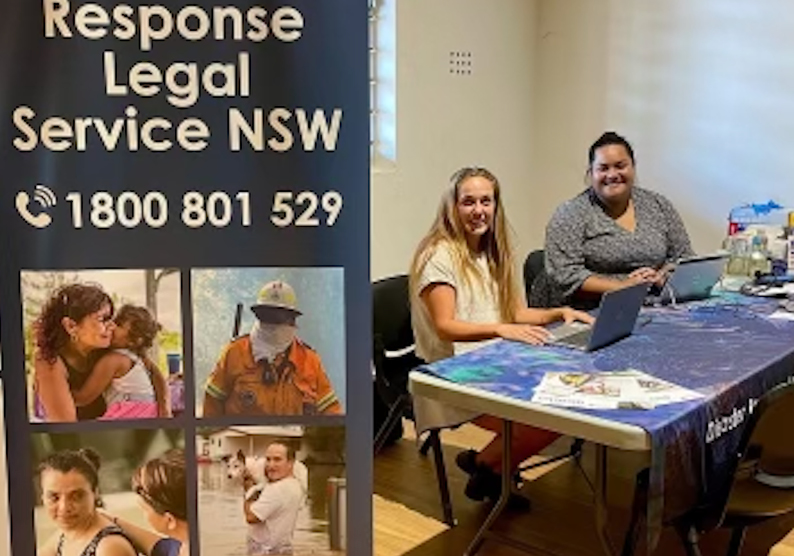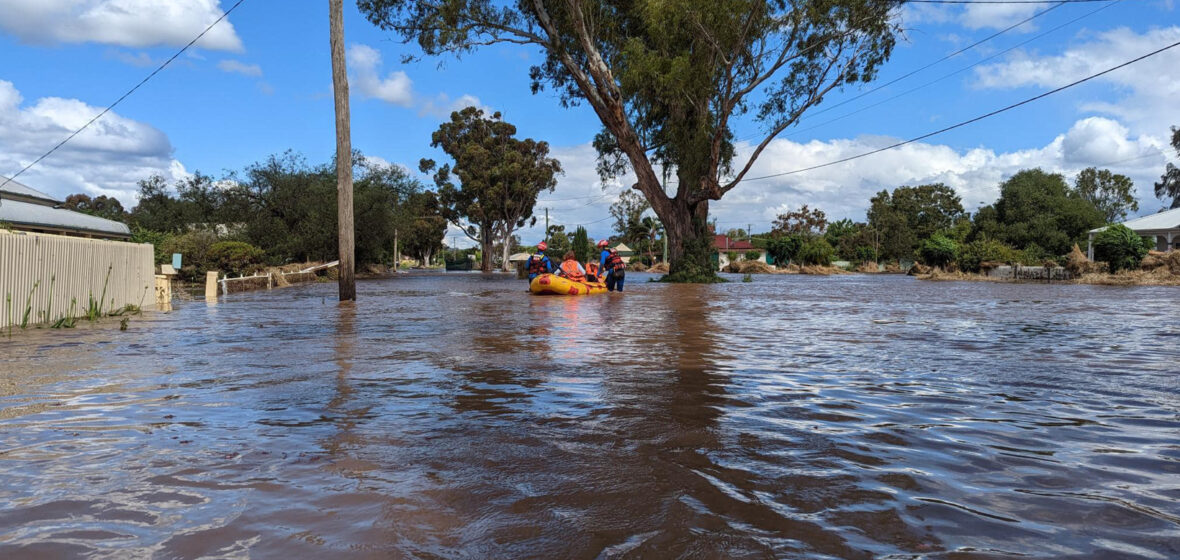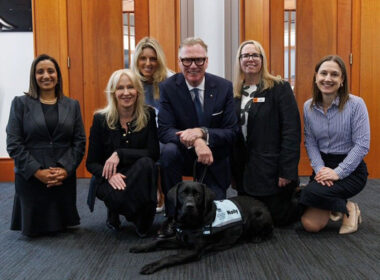We are stretching ourselves as much as we can in the immediate aftermath because we know that is when people need help. It is such a difficult and confusing time. That dislocation and complete shock.
Solicitor Sally Bryant’s voice cracks as she speaks with LSJ over the phone from the makeshift flood recovery centre in Orange, one of dozens of towns in the NSW’s Central West counting the toll of the most recent disaster to hit the state.
Bryant and her team of lawyers at Legal Aid NSW’s Disaster Response Legal Service (DRLS) have provided more than 4000 services to flood affected communities since 1 March this year, when catastrophic rainfall forced Lismore in the Northern Rivers under water.
In the last week, Bryant estimates her team has helped another 150 people across the Central West reeling in the aftermath of yet another devastating weather event. But this time, the tragedy hits closer to home for Bryant, who grew up in Cowra – an hour south of Orange – where flooding has also swept through.
“So many of our clients have lost absolutely everything. They have lost their clothes, their vehicles, their everything. It’s still very raw,” Bryant becomes emotional as she relays her account of the wreckage.
“The devastation is frightening.”
The DRLS team is dotted around the region at pop up recovery centres offering early intervention legal advice to displaced and distraught locals – the most recent at Eugowra, where 80 per cent of homes have been damaged. The recovery effort in Forbes will begin on Monday 28 November, as recovery agencies haven’t been able to secure a safe space within the town and the community has been isolated for weeks.
“We are stretching ourselves as much as we can in the immediate aftermath because we know that is when people need help. It is such a difficult and confusing time. That dislocation and complete shock,” Bryant, the DRLS manager, says.

The scenes Bryant describes in Eugowra are not dissimilar to a warzone, scenes that have played out only too often in 2022. Entire houses have been ripped from their foundations and scattered at random points throughout the town. Hundreds of residents were airlifted to Orange, 80km away, by helicopter and are now holed up in emergency accommodation.
“The recovery centre has been set up at the Eugowra showground next to other government and local services. There are groceries, clothing, furniture, and tools, all donated, ready for anybody who needs them. This is when country towns come into their own. The support is amazing,” Bryant says.
“In Eugowra, we saw 30 clients on day one [of the DRLS being there]. The stories are all very similar in that nobody has ever seen anything like it. People aren’t calling it a flood; they are calling it an inland tsunami. Locals have described a wall of water. It is extraordinary how fast it happened.”
As flood waters recede and residents begin to confront the colossal rebuild, legal questions relating to insurance and financial hardship are materialising. Many residents across the Central West were uninsured for flood before the current disaster struck this month, as flood premiums grew to as much as $40,000 a year.
“At this stage, most of our advice is about flood exclusions in insurance policies, and definitions of flood versus storm and for those with flood cover, we have been advising clients about the insurance claims process and ensuring they are getting access to important additional benefits, like temporary accommodation,” Bryant explains.
“There are also questions around financial hardship because a lot of these people have lost absolutely everything. We have been giving advice about how to ask credit providers and banks for hardship variations, and also about their eligibility for Government Flood Relief Grants. We’ve also advised tenants about their rights where their rental property has flooded.”
 Sally Bryant, Manager of Legal Aid NSW's Disaster Response Legal Service
Sally Bryant, Manager of Legal Aid NSW's Disaster Response Legal Service
The Insurance Council of Australia (ICA) has declared a “significant event” for parts of the Central West impacted by flooding since Saturday 12 November, and preliminary “catastrophe processes” have been activated. Essentially, ICA representatives are working with government and agencies to understand the impact on communities and ensure residents receive assistance.
“Communities in Central West NSW are bearing the brunt of significant flooding, and for many this is a recurring event, with Forbes experiencing its third devastating flood event in the past four weeks,” ICA CEO Andrew Hall said.
“Insurers stand ready to support impacted communities when they need it most and our Significant Event declaration allows us to better monitor and assess this event, so insurers can best respond.”
Prime Minister Anthony Albanese and NSW Premier Dominic Perrottet visited Eugowra on Tuesday 22 November and announced a $50,000 disaster payment for flood-hit businesses in NSW. Successful applicants will receive an upfront payment of $25,000, while a further $25,000 per business is also available on the presentation of receipts.
The Law Society of NSW’s Pro Bono Scheme supports the DRLS through referrals. Separately, at least ten Central West law firms have also committed to providing free legal help to victims of the region’s floods.
“I’m awestruck but not surprised by the willingness of our members, who themselves may be flood affected, to come to the aid of locals who need urgent legal help. This offer of help follows our members’ pro bono efforts following the floods in Lismore earlier this year and in the wake of the catastrophic bushfires in late 2019,” Law Society of NSW President Joanne van der Plaat said.

Bryant says what many people struggle to grasp is that the work for impacted communities, and solicitors assisting, continues well beyond the immediate aftermath of a flood or fire, into weeks, months and sometimes years after the disaster. Bryant calls it the “long tail of recovery”.
The devastation in the Central West is the third major flooding event in NSW this year. The DRLS still has a strong presence in the Northern Rivers, providing weekly and fortnightly services to recovery hubs in Lismore and other affected communities, as well as to residents in Western Sydney, Central Coast and the Hunter region following flooding in July.
“Early intervention and immediate advice are crucial, but having that longevity of being able to provide services into the future is also crucial,” Bryant said.
“About three weeks ago a solicitor in our team got an excellent result for a bushfire victim who had been fighting a claim through her insurer for years. AFCA (The Australian Financial Complaints Authority ) recently made a determination that the insurer has to pay her claim in full, which means she will be able to rebuild her home. She has been living in a shed for almost three years since the fires.
“I almost cried when I heard. When her lawyer rang her to say the claim had got up, she said ‘I can see a future for myself’. It gives you goosebumps,” Bryant says.
People with legal issues arising from disasters can find out how to access help through the Disaster Response Legal Service coordinated by Legal Aid NSW here or call 1800 801 529.
For the most up-to-date list of recovery assistance points, visit: www.service.nsw.gov.au/floods/recovery-centres.




